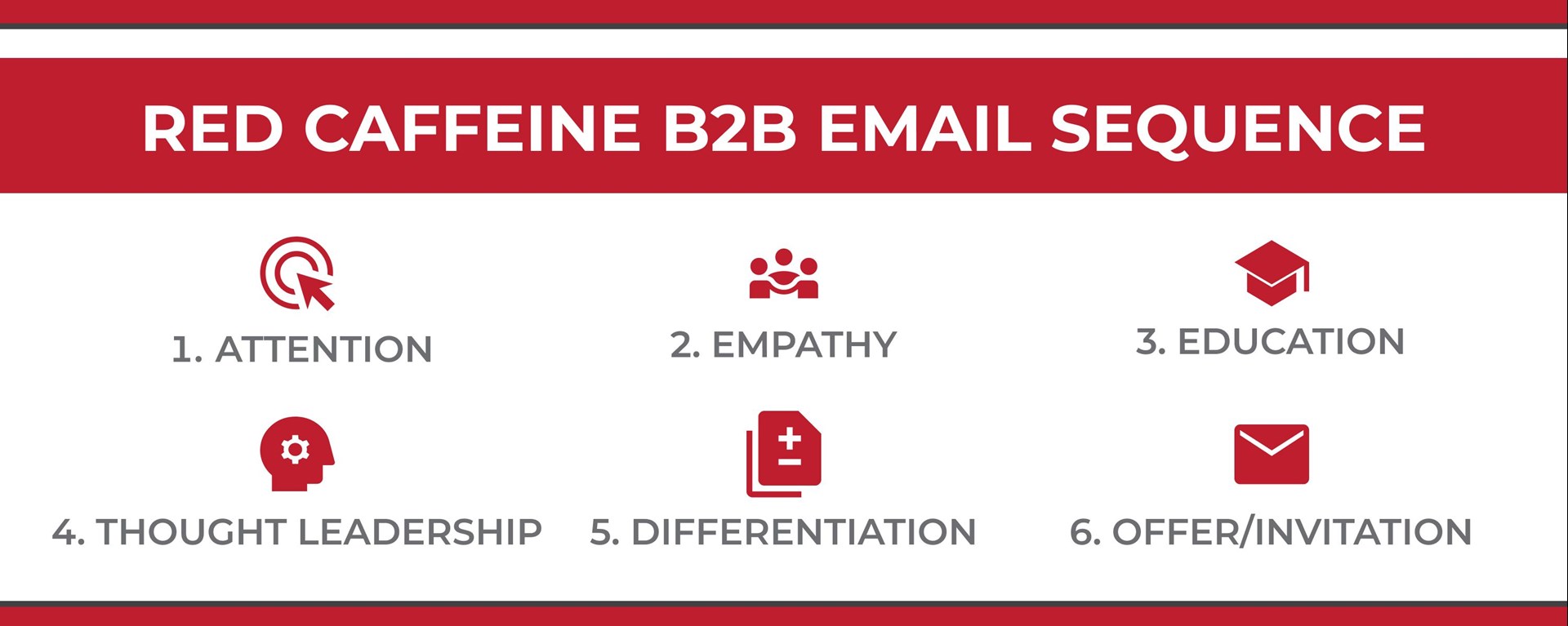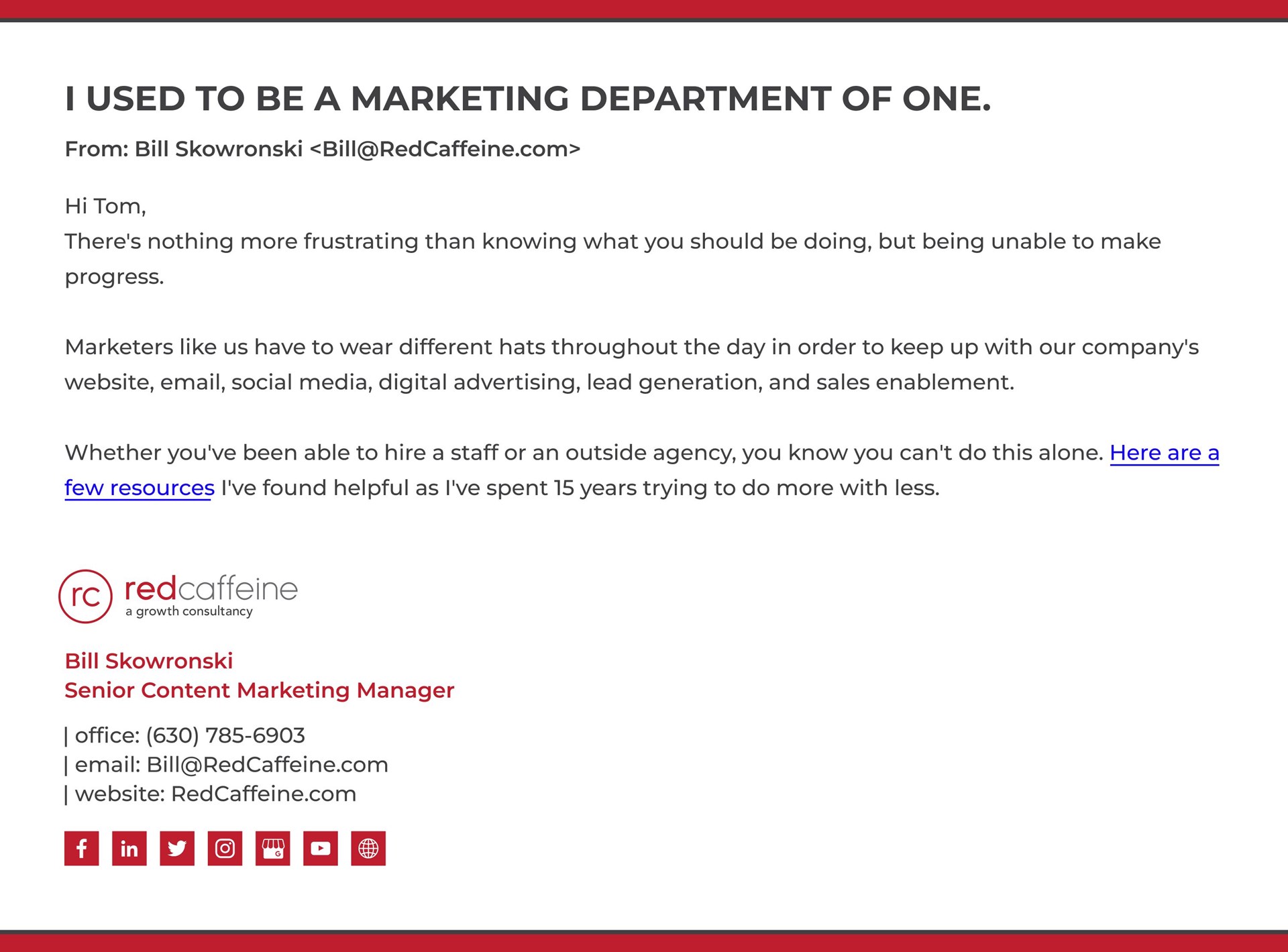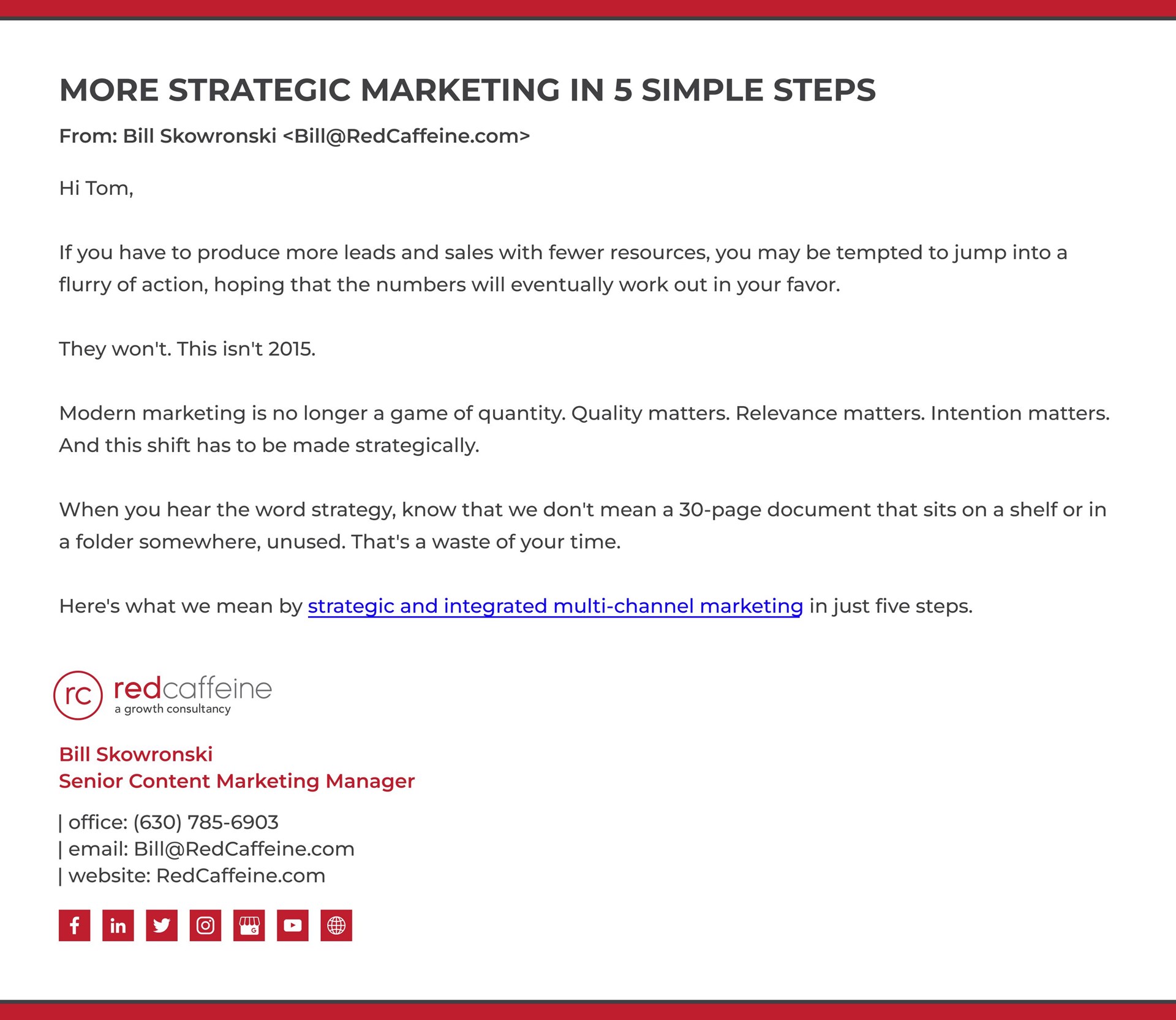If you delete or ignore most of the emails you see and you see right through anyone asking for “just 10 minutes to chat,” you can probably tell when someone is trying to sell you.
The thing is, your prospects can tell, too. And they’re also tired of it.
All of this is obvious to us. Yet, when we sit down to email a prospect, we forget what it’s like to be on the receiving end—or the deleting end—of the message.
That has to change. If you want your prospects’ attention; if you want them to open, read, click, and/or respond to your emails. If you want your prospects to become your customers, you’re going to have to do better.
And, if you’re ready to choose a better approach to sales and marketing email, you’re in the right place.
Take a look at the article below. I’ve laid out the six-email sequence we use to guide prospects from awareness to action. And make plans to join us on February 16th at noon when Skip Miller, author of Outbounding: Win New Customers with Outbound Sales and End your Dependence on Inbound Leads joins us on the Business as ‘Un’usual webinar.

Create a Narrative With B2b Prospects
At Red Caffeine, we use an intentional sequence for effective sales prospecting. And, regardless of your industry or your B2B customer, it can work for you because it’s based on human psychology.
Our sequence creates a narrative with prospects instead of taking six random jabs at them. Over time, it helps reps raise awareness, build credibility, and show value before you make your first ask.
1. Attention
You want prospects to open your email, read it, and take action.
BUT…the biggest mistake you can make is going for the one-call close. The second you ask your prospect to do something for you (ex: schedule a quick chat), you’ve made the narrative about yourself and your quota–not the prospect and his problem.
The first email in our sequence is designed to break through something called The Reptilian Brain.

This part of our brain helps us identify familiar things, which it interprets as safe, as well as unfamiliar things, which raise suspicion.
There are ways to break through your prospect’s reptilian brain. But, you better have something worthwhile to share once you’re inside. Otherwise you’ll be exposed pretty quickly.
Here are a few simple ways to get someone’s attention:
- Ask a relevant question that shows you’re familiar with the prospect’s industry or role.
- Introduce proprietary research, data, or insight that would help the prospect do his job better.
- Speak to your prospect’s biggest fear, as documented in your buyer persona.
Whichever approach you choose, be authentic.
The Attention email should stop your prospect from scrolling long enough to process the subject line and your name. If you’re lucky, they’ll open it. If they reply or call, you should immediately go buy a lottery ticket.
2. Empathy (Pain Points)
Everyone feels a bit of frustration in their job. But, a pain point is something that forcefully grabs your attention and begs to be fixed. It’s said that people respond to pain more than they respond to pleasure. If you know what your prospect is going through, now is the time to show it.
The second email in our sequence plants the seeds for a fruitful relationship by showing a little empathy.

Instead of a self-serving ask, an empathetic message says, “I know you. I know what you’re struggling with and I understand what’s causing it. It’s not easy, but it’s going to be ok.”
Share helpful tips, resources, or quotes from customers you’ve helped with similar problems. In the spirit of service, your only goal is to find common ground and show that you’re here to help.
3. Education
Our third email continues to show you add value to your prospects’ lives. Education includes answers to frequently asked questions, helpful resources, data, and insights that lead to better decision-making.

Your prospect may not be ready to buy, but everyone is ready to make better decisions. And the person who makes that possible instantly earns credibility.
READ THE 6 EMAIL CAMPAIGNS YOU NEED IN B2B SALES & MARKETING
4. THOUGHT LEADERSHIP
A thought leader is an established industry expert who has a positive reputation for helping others by offering their knowledge and insight.
In this fourth email, you stand apart from those competitors who are still just looking for “a quick call.”

To be clear, not every blog, video, case study, and downloadable asset qualifies as thought leadership. The key is whether or not your content introduces relevant thinking that changes the way your audience sees or addresses a problem.
Thought leadership typically comes from highly respected, senior-level executives. However, you can often find great insight throughout your company. And if you’re tapped out, there’s nothing wrong with sharing thought leadership from outside your organization as long as you give credit and add your original perspective.
5. Differentiation
Once you grab someone’s attention, find common ground with them, and deliver value that helps them solve their problems, you’ve begun to earn the right to talk about yourself.
Yet, as you explain why your company is different from (read: better than) everyone else, remember prospects are still generally self-interested. That means you’re more likely to strike a chord with them if you frame your differentiation in a way that makes their lives easier.

Questions to Answer in the Differentiation Email
How is a prospect’s job easier after working with you?
When customers refer you or write a review, what do they say was unexpected about the experience?
6. Offer/invitation
Now, it’s finally time to ask your prospect for something. But, that doesn’t mean it’s time to ask for the sale. Most prospects won’t be ready to make a purchase—or even speak to a salesperson in most cases.
Since it’s very rare for B2B companies to offer discounts, you can use this email to invite prospects to a relevant webinar, an event, or to download a valuable asset as a way of continually nurturing the relationship until the time is right for them.

Now, What?
When you finish this six-email sequence, you can use open rates and click-through rates to determine which messages resonated most with your prospects. Just keep in mind, warming up cold prospects takes time. Nurturing warm prospects takes time. But, you’re taking steps in the right direction now. So, when they feel enough pain and they’re ready to find a solution, you’ll show up in their inbox.
Best of all, this sequence can be repeated over and over. Highlight different pain points. Provide other educational resources. Deliver new thought leadership. Choose another differentiator. And, extend a fresh invitation to join you—when they’re ready to change.
Join Thousands Of
Like-Minded Folks
Receive monthly business growth tips
and event invites right to your inbox.



